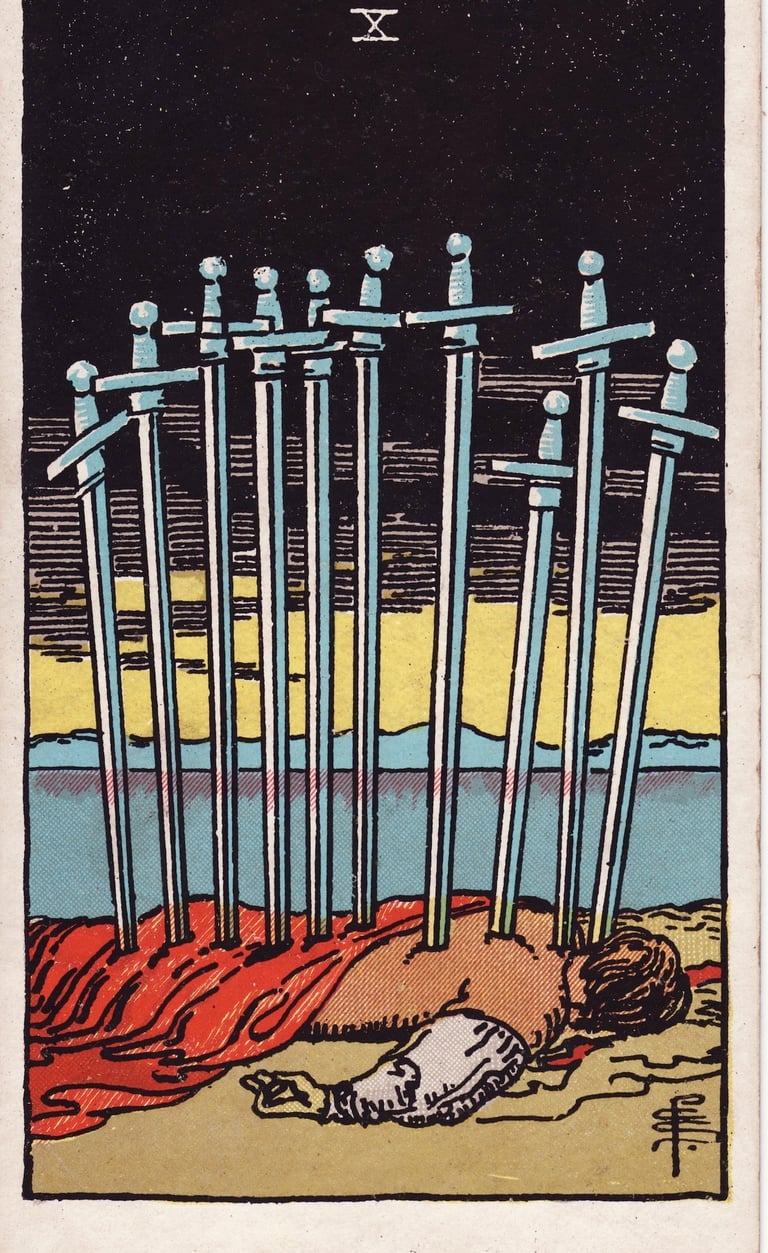TEN OF SWORDS
The Ten of Swords tarot card symbolizes painful endings, betrayal, and emotional collapse. Learn upright and reversed meanings, key symbolism, and how to interpret this intense card in readings about closure, crisis, and healing after loss.
TAROT MATRIX


Ten of Swords
Keywords: betrayal, painful ending, rock bottom, collapse, defeat, crisis, finality, loss, letting go, surrender
Upright Meaning
The Ten of Swords upright represents a painful ending, betrayal, or emotional rock bottom. It often appears when a difficult situation has come to a dramatic conclusion—whether a breakup, loss, or moment of deep surrender. Though intense, this card also marks the final moment of suffering before a new dawn. In love, it can indicate heartbreak, deceit, or closure. In life, it speaks to crisis or burnout but also the clarity that follows devastation. The Ten of Swords reminds you: it’s over, and now you can begin again.
Reversed Meaning
When reversed, the Ten of Swords suggests recovery, resilience, or the worst being behind you. You may be healing from betrayal, pulling yourself out of despair, or finally releasing what has weighed you down. In relationships, it could point to second chances, personal renewal, or slowly regaining trust. In other areas, it’s a sign that the darkness is lifting. The reversed Ten of Swords is your invitation to rebuild—stronger and wiser.
Summary
The Ten of Swords is a card of endings and emotional collapse—signifying painful finality when upright, and recovery or rebirth when reversed. It’s the closing chapter that clears space for healing and hope.
HOW TO READ
The card often depicts a person lying face down with ten swords in their back, beneath a rising sun—symbolizing total surrender and the promise of renewal. Ask: What painful truth are you now free from? What can rise after this ending?
You can purchase this deck here.
© 2025. All rights reserved.
Tarot card images displayed on this website are based on the original 1909 Rider-Waite Tarot deck illustrated by Pamela Colman Smith under the direction of Arthur Edward Waite. These images are in the public domain and are used here for educational and illustrative purposes.

